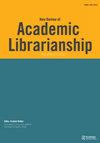为合成预测自动提取反应模板。
IF 2.3
Q2 INFORMATION SCIENCE & LIBRARY SCIENCE
引用次数: 1
摘要
在过去的60年中,已经开发了几种用于计算规划合成路线的工具。传统上,这些都是建立在手动或自动提取的反应规则或模板上的,前者从有机化学的深入知识中获得,后者则是建立在反应数据库上。本文介绍了自动提取反应模板的过程,从反应中心识别的方法开始,到它们在计算机辅助合成计划和化合物从头设计中的应用。本文章由计算机程序翻译,如有差异,请以英文原文为准。
Automatic Extraction of Reaction Templates for Synthesis Prediction.
Several tools for the computational planning of synthetic routes have been developed over the last 60 years. Traditionally these have been built on manually or automatically extracted reaction rules or templates obtained from a deep knowledge of organic chemistry in the case of the former, and reaction databases for the latter. Herein we give an introductory overview to the process of automatically extracting reaction templates, starting from methods for reaction centre identification, through to their use in computer aided synthesis planning and the de novo design of compounds.
求助全文
通过发布文献求助,成功后即可免费获取论文全文。
去求助
来源期刊

New Review of Academic Librarianship
Social Sciences-Library and Information Sciences
CiteScore
3.40
自引率
0.00%
发文量
20
 求助内容:
求助内容: 应助结果提醒方式:
应助结果提醒方式:


